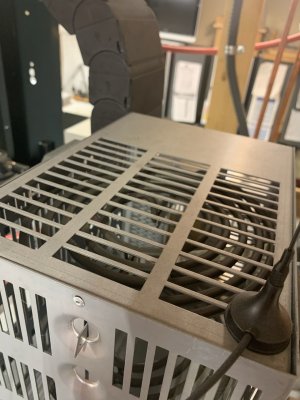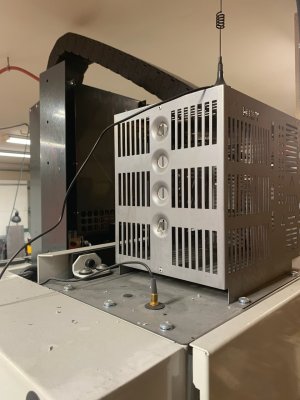As per another thread, I've been refitting my power hammer with a 3-phase motor and VFD.
I'm glad I set this all up on the bench here in town before dragging it out to the cabin - it took me three trips to the hardware store to get the right spade connectors and other wiring sundries.
I now have the motor running smoothly, with a 20 second ramp in and ramp out - This should keep the solar install a little happier.
But that 20 second ramp down to protect my inverter worries me a bit in shop/heavy equipment land: It's not a very quick power-off.
So a question to all you VFD enthusiasts: What do you do for an e-stop?
I figure I can put a 20amp 2-pole shutoff on my supply, or I can do a three-pole shutoff on my 3-phase.
What's best?
I'm glad I set this all up on the bench here in town before dragging it out to the cabin - it took me three trips to the hardware store to get the right spade connectors and other wiring sundries.
I now have the motor running smoothly, with a 20 second ramp in and ramp out - This should keep the solar install a little happier.
But that 20 second ramp down to protect my inverter worries me a bit in shop/heavy equipment land: It's not a very quick power-off.
So a question to all you VFD enthusiasts: What do you do for an e-stop?
I figure I can put a 20amp 2-pole shutoff on my supply, or I can do a three-pole shutoff on my 3-phase.
What's best?




